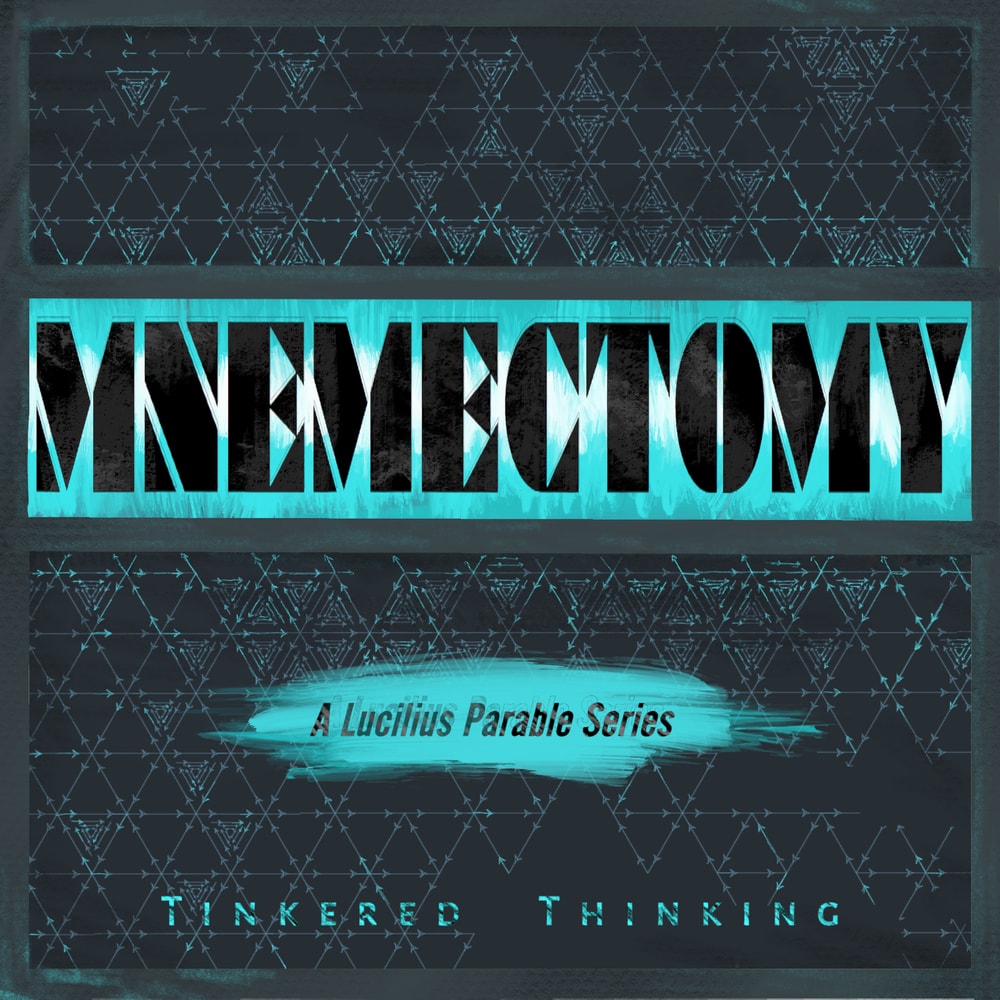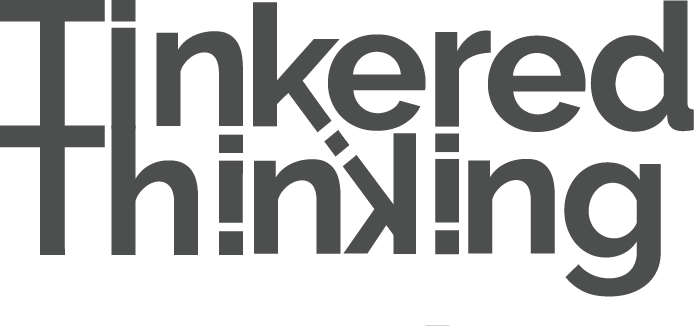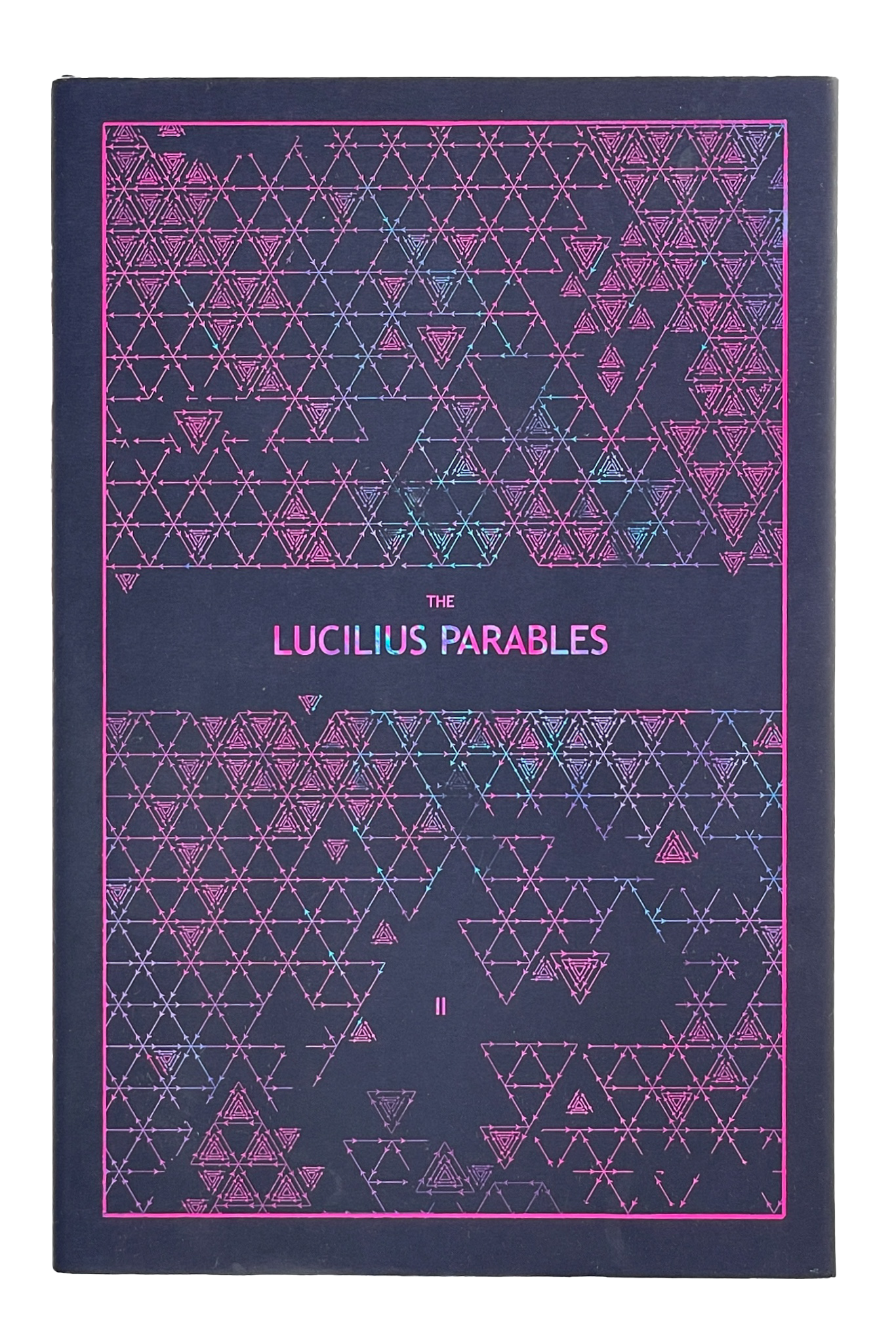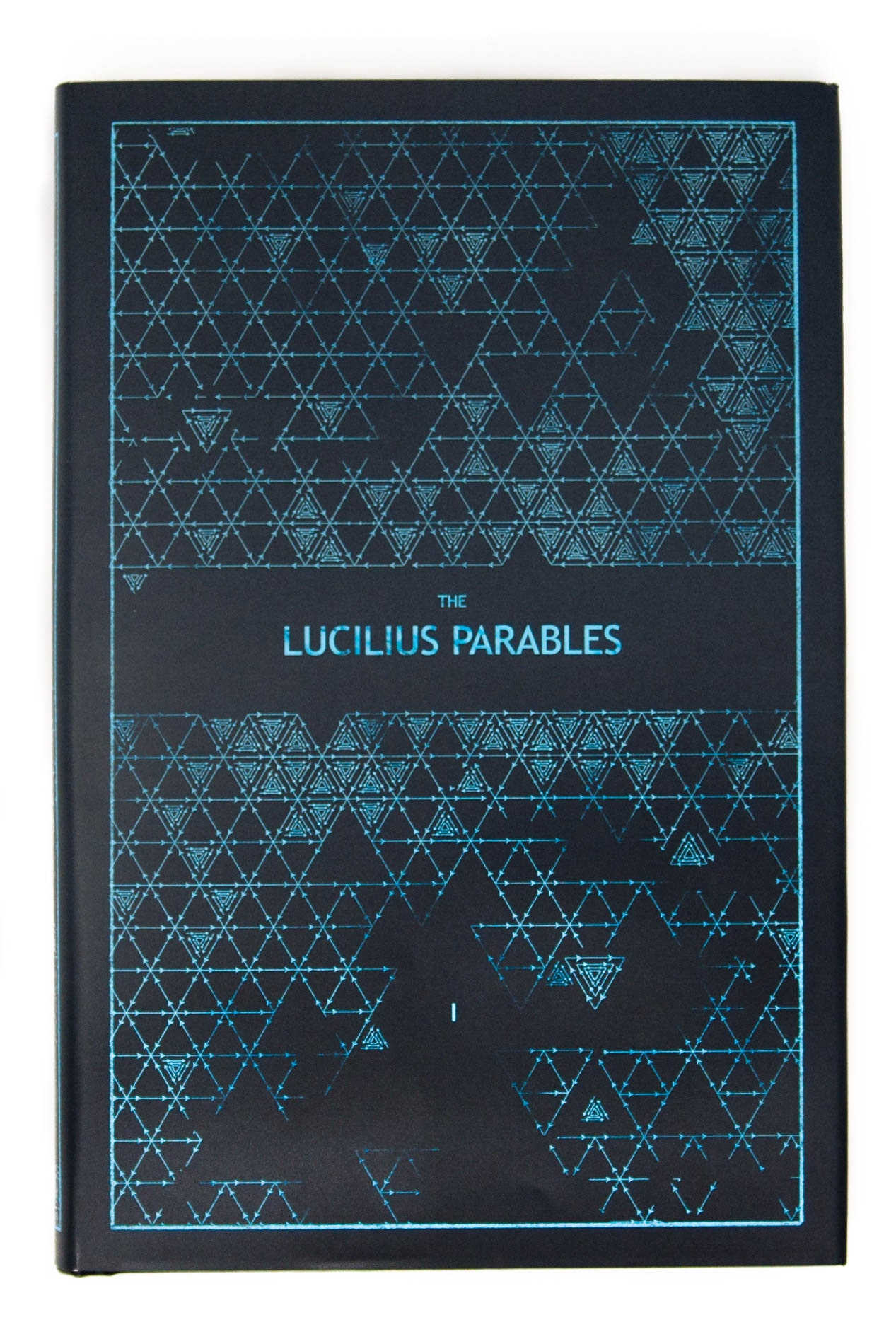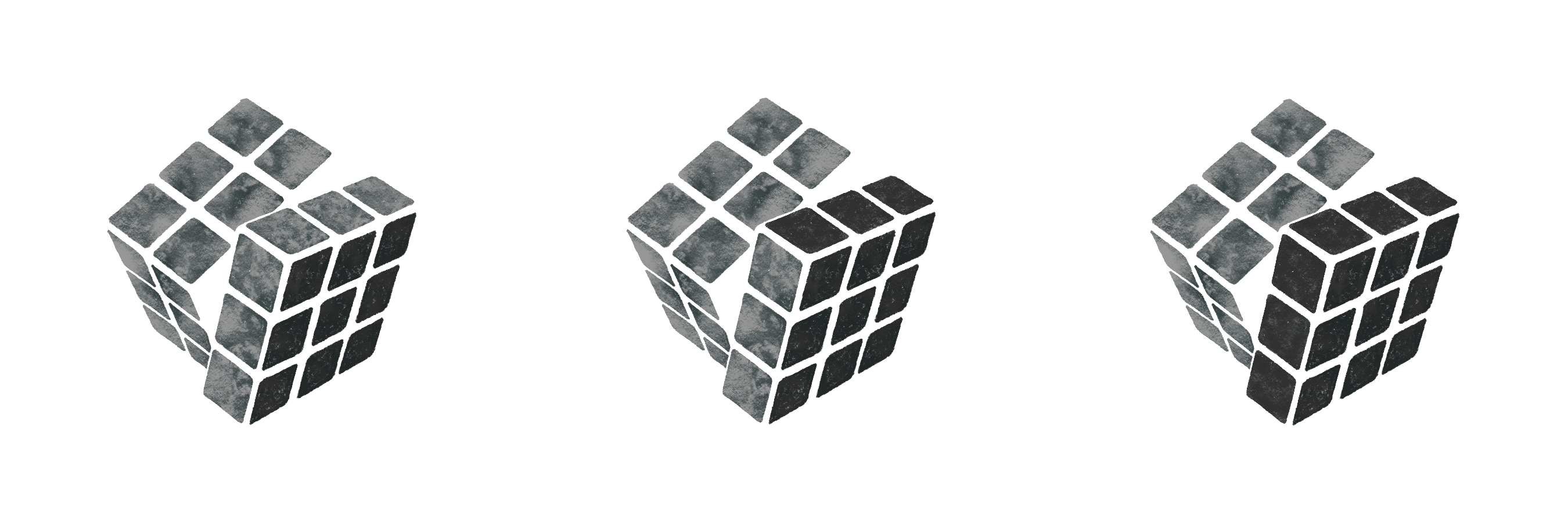Daily, snackable writings to spur changes in thinking.
Building a blueprint for a better brain by tinkering with the code.
subscribe
rss Feeds
SPIN CHESS
A Chess app from Tinkered Thinking featuring a variant of chess that bridges all skill levels!
REPAUSE
A meditation app is forthcoming. Stay Tuned.
QUOTES LIKE JOKES
September 15th, 2018
There is an interesting connection between these two meme groups.
They both titillate the brain. And they do this quickly.
The components of each are always already in the brain. I.E. we know the language and all the words required to understand the joke or quote.
What the joke or quote does is draw a connection between parts of the brain in a specific pattern that the brain has never used before. Otherwise, we’d have thought of the joke or quote first.
Perhaps enough of us have had the exceedingly rare experience of thinking of something clever first and then hearing it used by someone with an actual audience who then gets the laugh or the applause for the quote. In these circumstances the brain is not titillated. No humor or delight is present. A vague sense of being robbed appears and the desire to tell those near that you thought of it long ago, as if to discredit it’s validity somehow, or scrape together whatever pride might be squeezed from any admiration of those willing to listen.
Both quotes and jokes are ‘collected’ in similar ways. Those who feel the need to make people laugh pay extra attention to jokes and remember them for later use. Those who collect quotes may do so for different reasons, but the urge to collect is the same.
Both quotes and jokes are like emotional enzymes. They are ways to quickly evoke some kind of emotion in another person.
At least with quotes, we imagine their use extends beyond this quick and ephemeral emotional lightening.
But like a forgotten good idea we know we had the other day that cannot for the life of us be recalled. . .
Quotes are of little use unless we have repetitive exposure and seek to change behavior based on the wisdom of the quote. This requires some work. Figuring out what the behavioral ramifications of a good quote might be. Sussing out the potentially complicated methods and processes required for making those behavioral changes, and much more. Far more work than the dopaminergic surge that comes for free with a smile and laugh from a joke.
Given the work,
Quotes can be far more useful than jokes.
YESTERDAY AND TOMORROW
September 14th, 2018
Neither exist.
This is a very strange thing to wrap the brain around. We speak and think and dream so much about the past and the future. But neither actually exist.
No one can get up and go get yesterday. We can get artifacts that might have to do with yesterday, like a photo, but a photo is not the past.
Likewise with the future. Tomorrow does not exist. By the time it comes around, it’s the present.
It takes some time to wiggle the brain into a space that grasps the idea that the day when we turned 9 years old simply doesn’t exist. Having artifacts from that time, in particular, our own self makes it feel as though that past day still exists somehow, but it doesn’t.
This fact can be very freeing.
It means we are not beholden to who we were yesterday, or last year.
It also means that when we plan, we are not planning for tomorrow, because we will never exist in a time ahead of ourselves and our current experience.
What this means is that when we plan, and act for the future, we are in fact planning for the present – a present that – when we experience it – won’t feel the least bit like tomorrow. It’ll feel like Now.
SWEEP IT UNDER THE FEED
September 13th, 2018
What is the difference between ‘clean’ and ‘organized’?
No word exists, nor was created in isolation. They are all on a spectrum of interdependency and nuance, and this interactive fact is more important than specific, potentially pedantic details about any given definition that we attempt to regard in isolation.
Such an attempt is a fool’s errand because any attempt to define a word entails the use of other words and therefore automatically hauls a word out of isolation
by default.
Any focused juxtaposition of words or concepts is simply an attempt to look at one way words relate out of many. For example, what is the similarity between ‘clean’ and ‘organized’ brings about a whole different discussion extending to the fact that both words can easily use the other in their definitions.
The first question, however – what is the difference between ‘clean’ and ‘organized’, would probably have to shift to a different perspective, one where the words cannot define each other. For this difference, we might ask whether they describe internal qualities of any given thing or external.
For example, a countertop might look clean, but still be covered in E. Coli, where as looking at an organized woodworking studio evokes the same pleasure that a seemingly clean counter top does, but carries along with it a bit more confirmation that we aren’t’ being deceived by the appearance of things. The macro analog to the clean looking countertop covered in E. Coli would be the beautiful tidy-looking house that has a pile of junk in every closet and stuffed into every drawer.
In this way we might say that ‘clean’ is a relatively superficial external judgment. Whereas ‘organized’ is a description about internal structure. To put this another way. ‘Clean’ is a description of the way things look, where as ‘organized’ is a description of the way things actually are.
Our clean looking social medias are the quintessential shoo-in for this juxtaposition. Platforms like Facebook and Instagram have made it very easy and convenient to stitch together clean, sanitized stills of our lives to create a beautiful looking tapestry that we like to think represents our lives.
We may ask at this point: for someone who spends an unhealthy amount of time on these social platforms, what other activities are they habitually doing?
For example, who is more likely to waste time scrolling through a feed:
Someone who reads and meditates daily
or
Someone who drinks everyday and rarely cooks?
I’ll leave it to you to answer that question, but it’s potentially useful to think about these activities through the guise of another question:
Which of these activities is contributing to an organized and healthy life as opposed to a life that just looks clean when everything is swept under the feed?
PIVOT HARDER BETTER FASTER STRONGER
September 12th, 2018
It’s said that the person who will not stop trying cannot be beaten. In order to maintain that kind of resilience, we do not try the same thing over and over. We try different things to see what will lead us towards our goal. Every failure or obstacle is met with a pivot, small or large, in order to persevere.
If we want to embody that kind of person who cannot be beaten, than we need not focus on perseverance. We would be better served to focus on our ability to pivot.
The most talked about and recognized aspect of the Cheetah is it’s ability to run faster than any other known creature. We picture the big cat like a sniper’s bullet, heading straight for it’s target. Single minded. Determined. Unstoppable. Like a locomotive, or a dive-bombing hawk.
A cheetah’s speed, however, is not the most interesting aspect of it’s abilities. It’s only the most talked about. What is more curious about the cheetah is it’s ability to maintain huge speed while turning and pivoting in a different direction.
We’ve all played a sport where a change in the game requires us to suddenly run in a totally different direction. Our poor ability to do this has resulted in quite a few torn MCL’s and sprained ankles.
But imagine changing your running direction while travelling at 55 mph. . .
Bones would snap.
It’s the cheetah’s ability to slow down and speed up very quickly before and after a pivot that give it the advantage. The body of the cheetah accomplishes this with incredibly powerful muscles but also very strong bones that can handle the forces of acceleration and deceleration.
Athletic endeavors aside, we really need not worry about how well our physical bodies can pivot in the way a cheetah’s body can. What is greatest importance with this analogy is to apply it to our minds and our emotions. How fast can we mentally and emotionally pivot?
Do we get hung up with anger or sadness needing to slowly, painfully turn in a new direction like the Titanic, or can we develop incredibly strong mental bones that can take the strain of an immense and immediate change in emotional velocity?
We must ask our selves: how fast can I bounce back?
How much better would life be if I could bounce back harder, better, faster, stronger?
What would it look like from the standpoint of behavior, as if I were looking at myself through a video recording, if I saw myself confronted with some terrible circumstance and instead of devolving into negative emotions, I pivoted immediately, taking that mental 90 degree turn in order to start solving the situation immediately?
Perhaps we don’t slow down fast enough right before the failure, and after the failure has occurred we stagnate in a shocked, depressed idleness for some long length of time. The bones and muscles of the human pivot are mental assets that we can grow and develop in a much shorter time frame than it took evolution to bless the cheetah with such physically equivalent gifts.
We can learn to full throttle straight into failure, and immediately get back up and start throttling in another direction. Like muscles and bones that need exercise, our emotional regulatory powers need a similar sort of exercise. The more failure we expose ourselves to, the more desensitized we become to the experience, which allows us to switch directions more quickly and try a new and improved strategy.
It harks to the old adage: what doesn’t kill you makes you stronger.
The converse is also true. What doesn’t make you stronger is slowly contributing to your death.
Instead of cowering in FEAR, we’d do best to get aggressive with ourselves and start making those difficult pivots towards our goals. The more we push ourselves into this strategy the more we’ll be able to pivot harder, better, stronger, faster.
*Of course the cheetah does not make huge turns while at top speed, it slows down some. The point still stands, even if the Pedantic reader would rather sulk.
A special shoutout to username Schmazo who brought up the cheetah connection on the Tinkered Thinking subreddit.
This episode references Episode 72: Persevere Vs. Pivot, Episode 114: Hawk and the Hound, and Episode 63: The Etymology of Fear. If you’d like to fully explore those references, check out any of those episodes next.
COCONUT
September 11th, 2018
Most of us know how to catch a monkey with a coconut, but the trick as an analogy for the mistakes we make as individuals might benefit from some mapping with real examples.
If you are one of the few people who has not learned how to catch a monkey wit ha coconut, it goes like this: You hollow out a coconut and leave a hole that is just big enough for a monkey to fit their hand through. Then you put some food in the coconut and leave it tethered down where a monkey will find it. A monkey will then reach into the coconut and grab the food, but because their hand is holding the food and forming the shape of a fist, the monkey can no longer pull their hand through the small hole. Even when a hunter is approaching the monkey to capture it, the monkey will still stubbornly hold on to the food while trying to pull out their hand. The mistake is clear and obvious to a human: just let go of the food, take your hand out and run away.
From our point of view, the problem is a simple mechanical problem that we can see very very easily.
We would benefit to ask if there are any problems we have that could be solved just as easily if we could look at it from a different perspective, in the same way that a monkey would easily avoid capture if they could see the problem from our perspective.
What are the coconuts in your life?
Here’s an easy example: That box of donuts getting passed around at work. Do we always grab one? This is a surefire coconut problem. Tens of thousands of years ago, there was very little sugar and carbohydrates available for human consumption. These dietary possibilities were certainly sought after and readily consumed when found because they are packed with energy, and energy was in tight supply back in the day. Technology, via the agricultural revolution and subsequent developments with food production have allowed our species to surround and drown ourselves in these dietary categories. The result? Uncomfortably super-sized humans that suffer increasingly worse health.
The desire to grab the donut is ancient.
It is strongly wired into our biology in the same way that the monkey holds tight to the food in the coconut that keeps it trapped.
If we are unhappy with our body, we can label that body and our unhappiness as a coconut. The food in the monkey’s fist need no analog. It is the donut we grab at work. The quick candy bar in the check-out aisle. The cheeky beer after work. The lump of sugar in the coffee. The frappe-crappa-cino or the Care-not-me-mock-me-otto from Starbucks. That creamy bowl of pasta. The dirty piece of pizza when the vegetables in the fridge feel like a chore to cook after a long day at work.
The difficulty with the coconut in our lives is that it is not as easy to see. It is not a straight-forward mechanical problem as it is with the monkey. The coconut we have to deal with is more abstract and spread out over space and time as a collage of decisions that we make. We think it has to do with willpower. If only we had more willpower, then we could make the better decision every time. But this is a farce. Something we say to quell our itch to fix things. A lie we tell ourselves so that we can keep travelling in the same RUTS and going to the same places.
Such a coconut requires some strategic thinking. Compare for example, the cultural image of the chef with the cultural image of the yoga teacher. One is clearly larger. While not all chefs are larger than yoga instructors, the majority of chefs have some extra weight. Is this because such people have less willpower? According to the lie we enjoy telling ourselves, this is the answer. But the comparison reveals the true nature of the difference.
The difference is the environment.
The yoga instructor is more likely to spend time in places and in a general environment where making the better dietary choice is easy. Willpower is not a question, it’s a question of what’s available. A yoga studio would not last long if it has complementary pizza and donuts before and after every class.
The environment of the chef, on the other hand, is replete with opportunity for poor dietary intake. A chef most likely spends a good deal of time preparing the sort of food that will attract customers to a restaurant. Competition with other restaurants creates a high probability that this food will appeal to our deepest instinct, and the desire to grab the donut is ancient. In summary, the chef is going to be surrounded with foods of high-energy density: carbs and sugar. Constantly preparing and tasting such food is going to have an obvious effect on the body if given enough time.
Such a chef might solve the problem of the coconut by cracking it and instituting a habit of intense resistance training which would build a body that could effectively handle such a load of food.
Or the chef could solve the coconut by letting go of the sort of food they cook and look for a different environment: say, cooking for a high-end yoga studio. Such an environment would demand a totally different sort of fare, and such cooking would naturally take a positive toll on the chef’s body.
How do we identify the coconuts in our life? Easy. What are you unhappy about?
There’s your coconut.
How do you solve that coconut? How do you pull your hand out or crack it?
That’s what the rest of Tinkered Thinking is for. Stay tuned.
This episode references Episode 125: Rut.
-compressed.jpg)
